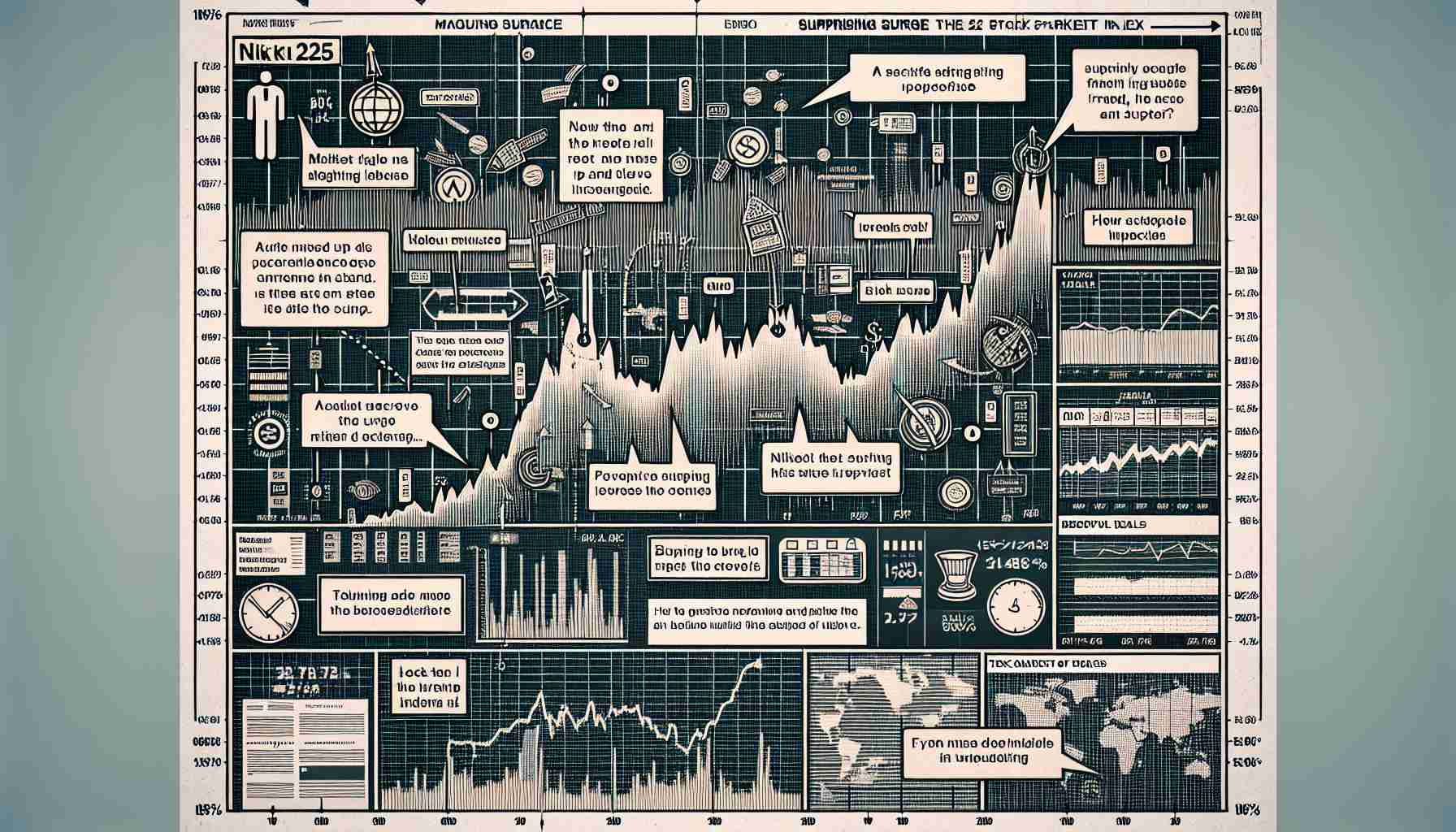Nikkei 225 Futures Show Positive Momentum
The Nikkei 225 futures market experienced a noteworthy rise during the night session on the 21st, closing at 38,960 yen, up by 50 yen from the previous settlement. This upward trend highlights a significant interest among investors.
In terms of technical indicators, the key points include several levels from the Bollinger Bands and moving averages. The projection from the three-sigma Bollinger Band stands at 40,722.03 yen, while the two-sigma sits at 39,752.68 yen, and the one-sigma level is at 39,268.00 yen. The 25-day moving average is slightly below at 39,265.00 yen.
Additionally, the Ichimoku Kinko Hyo system provides critical insights with its baseline at 39,140.00 yen and the conversion line at 38,964.53 yen. The closing value from the night session was noted at 38,902.50 yen, indicating a current healthy market sentiment.
From the earlier trading day, the benchmark index concluded at 38,810.00 yen. Other critical levels to watch are the leading span one at 38,795.00 yen and leading span two at 38,783.32 yen, alongside a -1 sigma Bollinger Band at 38,680.00 yen, all suggesting a range of dynamics investors should navigate carefully.
Analysts remain optimistic as the market trends develop, keeping a close eye on these indicators and movements.
Investing Trends and Their Broader Implications
The upward trajectory of the Nikkei 225 futures reflects a growing confidence among investors, which resonates far beyond Japan’s borders. As the largest economy in Asia, Japan plays a pivotal role in shaping global market dynamics. A robust performance in its futures market can signal economic stability, influencing investor sentiment throughout the region, including in emerging markets highly intertwined with Japan’s economic fate.
This optimistic sentiment is further amplified by potential environmental ramifications. As investors increasingly favor companies committed to sustainable practices, those involved in tech innovation and green energy are likely to benefit. Japan has been making strides in this arena, with government policies aimed at carbon neutrality presenting opportunities for growth in sectors aligned with environmental sustainability.
Looking ahead, the global economy may experience shifts as Japanese companies enhance their competitiveness, particularly in technology and renewable energy. Analysts foresee that these developments could lead to an increase in foreign investment and collaboration, particularly with firms prioritizing environmental, social, and governance (ESG) criteria.
Long-term, the movements within the Nikkei 225 can serve as a barometer for global economic health. The interplay of market performance and investor behavior provides insights into larger economic trends, illustrating the interconnected nature of today’s financial systems. As such, maintaining awareness of these developments is crucial for understanding the evolving landscape of global finance.
Navigating the Nikkei 225 Futures: Insights, Trends, and Market Dynamics
The Nikkei 225 futures market is currently showing positive momentum, with investors keenly observing key indicators that signal potential shifts in the market landscape. With a closing value of 38,960 yen on the night of the 21st, reflecting an increase of 50 yen, there are several critical aspects to evaluate for those engaged in trading or investing in this index.
Technical Indicators Overview
The technical landscape for the Nikkei 225 indicates robust activity:
– Bollinger Bands: The three-sigma band projects a level of 40,722.03 yen, while two-sigma and one-sigma levels are currently at 39,752.68 yen and 39,268.00 yen, respectively. These Bollinger Bands suggest that the market is displaying volatility and potential for upward movement.
– Moving Averages: At a 25-day moving average of 39,265.00 yen, there remains a supporting indicator that trends upward. The interplay between moving averages and current prices can provide insights into future market directions.
Ichimoku Kinko Hyo Analysis
The Ichimoku Kinko Hyo system is another essential analytical tool, providing the following levels:
– Baseline (Kijun-sen): Positioned at 39,140.00 yen, this level serves as a support point.
– Conversion Line (Tenkan-sen): Closing at 38,964.53 yen, this line indicates the short-term market sentiment.
– Leading Span Indicators: Leading span one at 38,795.00 yen and leading span two at 38,783.32 yen highlight potential resistance levels that market participants should watch closely.
Market Sentiment and Futures Outlook
The recent closing value from the night session at 38,902.50 yen reflects a healthy market sentiment with a cautious optimism among traders. Analysts are closely monitoring the benchmark index as it concluded the previous trading day at 38,810.00 yen, suggesting positive overall momentum.
Pros and Cons of Investing in Nikkei 225 Futures
Pros:
– Growth Potential: Positive indicators suggest potential for significant gains.
– Technical Indicators: Advanced analytics provide comprehensive insights into market movements.
Cons:
– Volatility: Fluctuations in indicators may lead to unpredictable market shifts.
– Global Influences: External economic factors can rapidly alter the market landscape.
Conclusion
As the Nikkei 225 futures market continues to evolve, staying informed about the technical indicators and market sentiment is essential for successful investing. The robust analytical framework offered by Bollinger Bands and Ichimoku Kinko Hyo provides a clear picture of the potential range and directional tendencies, enabling traders to make more informed decisions.
For more insights into market trends and investment strategies, visit Nikkei.
